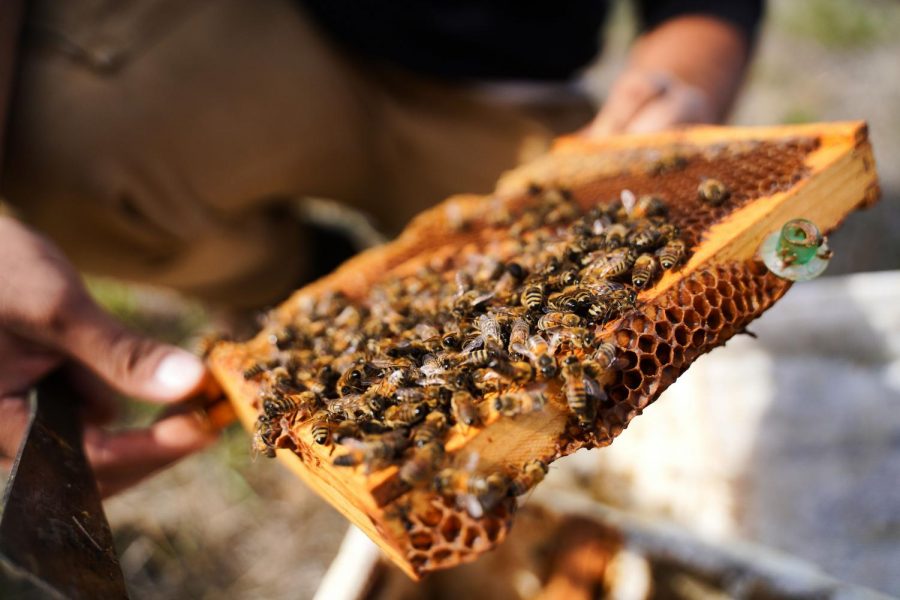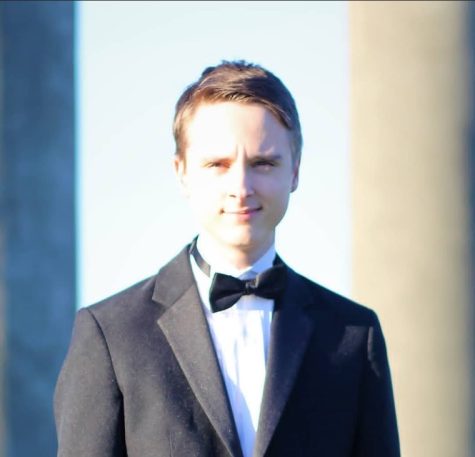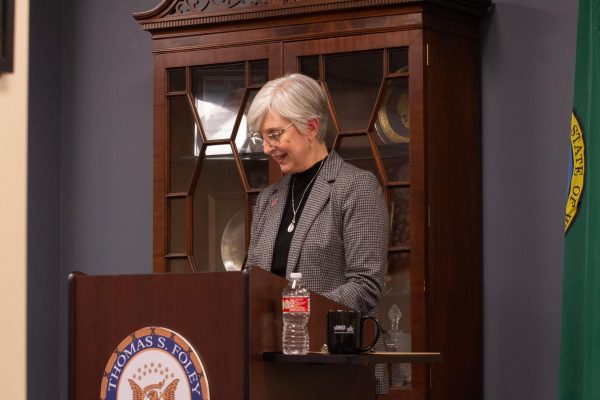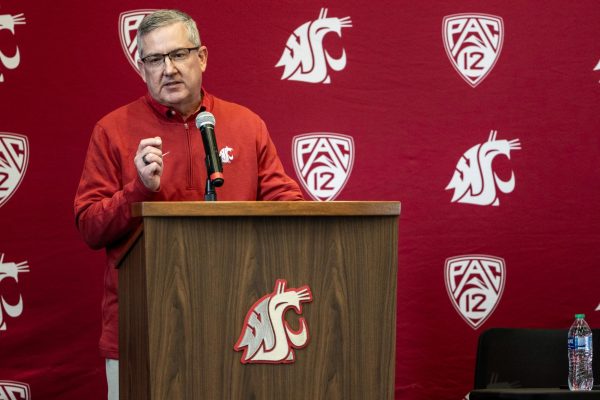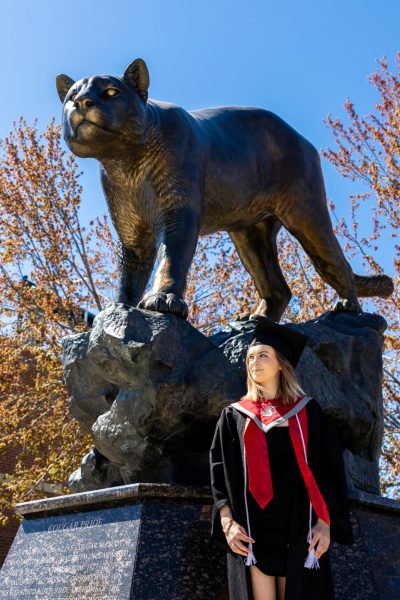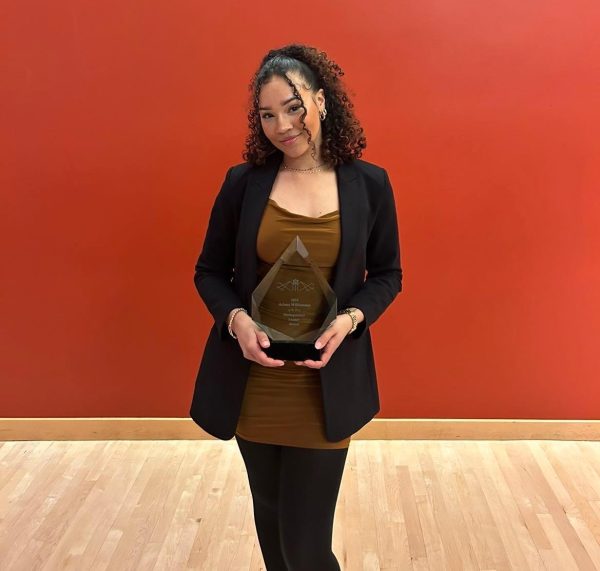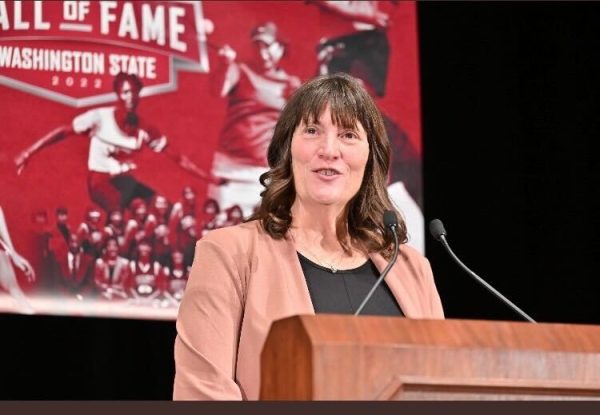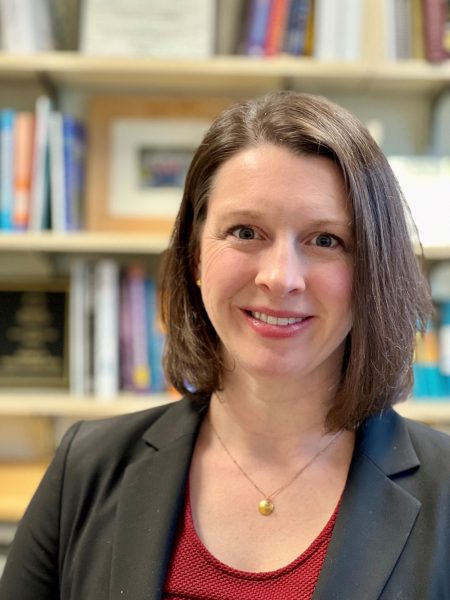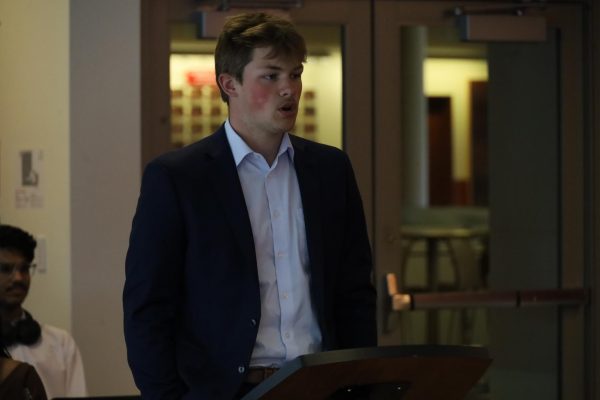WSU professor’s work is un-bee-lievable
Steve Sheppard conserves bee genetics
HSING-HAN CHEN | DAILY EVERGREEN FILE
On the job, Steve Sheppard looks through hives with a smoker and runs the lab at WSU.
September 2, 2022
Whether it is co-founding the world’s first germplasm bank or covering a provost in a bee beard, entomology professor Steve Sheppard is no stranger to bees.
“They’re the most diverse group of organisms on the planet with at least a million named species. The biodiversity and how they fill so many niches is just endlessly fascinating,” he said.
Since 1996, Sheppard has worked with bees at WSU, but he has been interested in them since he was a child. His great-grandfather was a beekeeper, which sparked his passion for bees and entomology.
“He had bee books and bee equipment that I ‘played’ with and looked at and wondered about,” Sheppard said. “Then as an undergraduate at the University of Georgia, I took a course in beekeeping and became interested there. From there, I went to graduate school to work on honey bees.”
At WSU, Sheppard said he has been working with population genetics and the evolution of bees. Honey bees are not native to the U.S., so he has received samples from Europe, Africa and Asia.
“We work on a bunch of different aspects of colony health,” Sheppard said. “We have people working on indoor wintering and better nutrition to really help the pollinating history.”
Since 1922, the U.S. has banned new bees from entering the country. Sheppard and assistant research professor Brandon Hopkins, also worked to bring in new genetics that have not been in the U.S. for 100 years, said research assistant professor Jennifer Han.
Hopkins and Sheppard created the world’s first germplasm bank, the USDA-ARS National Germplasm Resources Laboratory in Beltsville, Maryland.
“Before we started working together, there was nowhere in the world where they were conserving honey bee genetics,” Hopkins said. “[Sheppard] was the first person to successfully get a permit to import honey bee germplasm.”
Hopkins first met Sheppard in 2010 as a doctoral student and served as a postdoc in his lab. He and Sheppard worked together to develop cryopreservation for honey bee semen as part of a permit that Sheppard had attained, he said.
“He’s one of the most friendly, easy-going people to work with that I’ve ever met,” Hopkins said. “I don’t know anyone his age who works as hard as he does. He’s one of the most hardworking individuals I’ve ever worked with.”
Sheppard also co-created a liquid nitrogen tank containing semen of many bee subspecies currently being bred at WSU, he said.
“As far as I know, we’re the only university in the United States that does that, and we have a permit to do that. That’s a great benefit to us in our breeding program. That was not a small accomplishment to be able to do that,” Sheppard said.
As for fun on the job, Sheppard said one of his favorite memories was when he and the bee team put a bee beard on the then-provost Dan Bernardo.
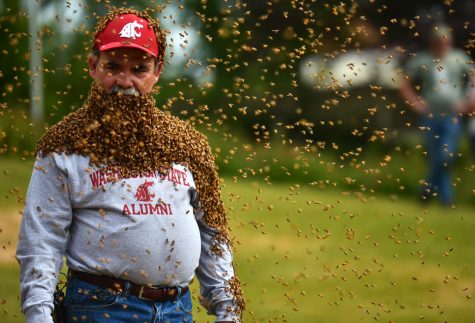
Bees swarm Provost Dan Bernardo on June 17, 2016, giving him an unusual beard. Alumni donated $1 million toward the new Honey Bee and Pollinator Research Facility.
“Dan Bernardo had a full bee beard hanging from him, and that was a pretty memorable experience,” Sheppard said. “I think we’re the only university where the provost wore a bee beard.”
In the field, Sheppard looks through honey bee colonies with a smoker. In addition to physical labor, entomologists also have to run the lab, said Nick Naeger, assistant professor and Sheppard’s colleague.
“Being a research professor is much like running your own business. You have to handle the financials, you have to handle the hiring and firing,” he said. “At the end of the day, you’re responsible for keeping the research lab running.”
On a seasonal basis, the operations of the university’s honey bee team changes. The team is currently in its summer rotation, Sheppard said.
“It’s kind of like asking a farmer what they do because our season varies throughout the year,” he said. “This season, we’re going out to make sure all the colonies have queens and checking if they have larvae which means they have a queen and getting ready for winter,” Sheppard said.
Sheppard said his job is not without its unfavorable duties. One of these is his annual trip to carry over 100 hives to California for pollination in February, featuring a long and tedious drive.
However, some of his favorite things include when every year, prior to the pandemic, the bee team made an international trip to see the bees in their homeland, he said. He also enjoys seeing the bees’ progress over time.
“The favorite things, for me, would be opening up a colony and seeing a beautiful queen that’s doing really well. It’s a product of something that is in a descending line in things you’ve been breeding and you feel that you’ve been making progress,” Sheppard said.

